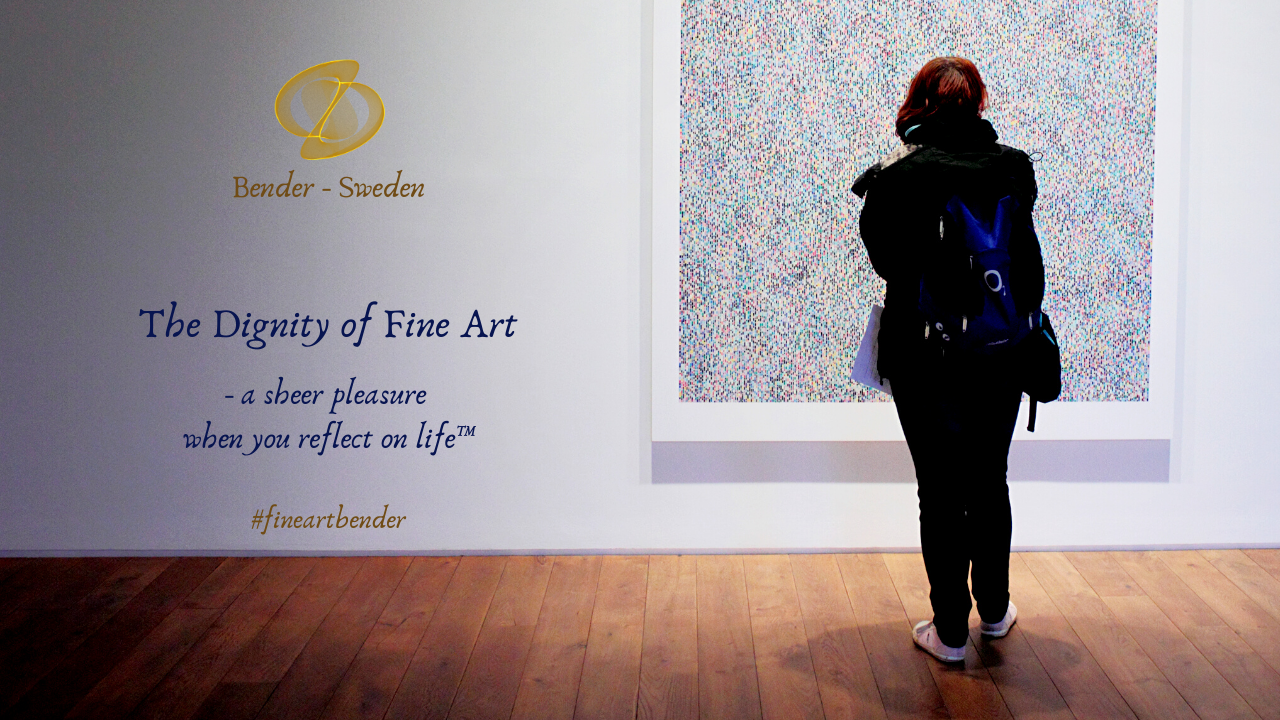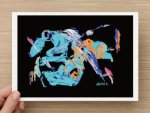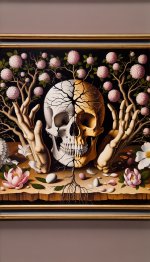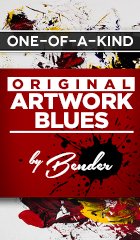Psychology of Art
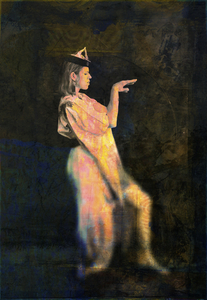
The Psychology of Art
The psychology of art studies the characteristics, cognition and perception of art and its production. Theodor Lipps, a research psychologist, had a lot to do with the early development of art psychology in the early twentieth century. Lipps biggest contribution involved trying to theorize the question of empathy. Later in art psychology theories, “empathy” one a very important element.
Ellen Winner is Professor and Chair of Psychology at Boston College, and Senior Research Associate at Project Zero, Harvard Graduate School of Education. She directs the Arts and Mind Lab, which focuses on cognition in the arts in typical and gifted children as well as adults. She is the author of over 100 articles and four books: Invented Worlds: The Psychology of the Arts (Harvard University Press, 1982); The Point of Words: Children's Understanding of Metaphor and Irony (Harvard University Press, 1988); Gifted Children: Myths and Realities (BasicBooks, 1997, translated into six languages and winner of the Alpha Sigma Nu National Jesuit Book Award in Science); and co-author of Studio Thinking: The Real Benefits of Visual Arts Education and Studio Thinking2: The Real Benefits of Visual Arts Education (Teachers College Press, 2007 & 2013). She served as President of APA's Division 10, Psychology and the Arts, in 1995-1996, and in 2000 received the Rudolf Arnheim Award for Outstanding Research by a Senior Scholar in Psychology and the Arts from Division 10. She is a Fellow of the American Psychological Association (Division 10) and of the International Association of Empirical Aesthetics.
Video: Ellen Winner - The Psychology of the Arts
Heinrich Wolffin is another name you may hear if you are studying art. He was not only a Swiss art critic, but also a historian. He tried to show that humans can understand architecture from a psychological point of view, instead of a historical point of view.
Many artistis, such as Paul Klee and Naum Gabo were influenced by Wolffin’s way of thinking.
Our minds are very powerful - both in good and bad. It allows us to learn new things but it can also deny us from learning those things the right way. In this panel I'll discuss how artistic and typical mind differs from each other and how to orientate your own mind for greater artistic improvements and understanding.
Video: AF16 - Artistic mind – Psychological take on making art
Where did Art Psychology First Start?
Art psychology first started in Germany. Throughout the fifties, art psychology started to show up in museum programs. Today, times have changed – art psychology can be found all over the world from the United States to China and beyond.
Video: The Nature of Seeing: Art, Perception, and the Brain – David Wilson
Each Piece of Art is Unique in its Own Way
With art, one views and composes artwork as unique ways that reflect the individuals emotions, preferences, experience and knowledge. The experiences has a lot to do with the emotional attachment between the art object and the viewer. The artist will need to be in tune with the object they are creating. As the artwork progresses, so does the artist. Both change and grow and both develop a new meaning in life.
When an artist makes discoveries in the psychology of art, they can take those discoveries and apply them to another field of study. One can obtain information about the inspiration, motivation and work ethics. That knowledge can then be transformed into other areas of the individual’s life.
Video: 6. Psychological Landscape - Robyn O'Neil | The Art Assignment | PBS Digital Studios
Psychology of Art and Criticism
The psychology of art can be criticized for many reasons. Art is not a science. The research can be scrutinized for relativity and accuracy. There is also a lot of criticism about art research as psychology because it’s subjective, not objective.
The audience interprets the work in multiple ways. The goals of an artist are very different from the goals of a scientist. The former means to give many interpretations of an object while the latter proposes one outcome to a problem.
"I always say, critical psychology is basically
psychology for social justice, and that's always been a big part of Prescott College's history." Check out the newest offering in the @prescottcollege Master of Arts program, Critical Psychology and
Human Services, presented by Faculty Director Dr. Sebastienne Grant.
Video: Master of Arts in Critical Psychology
Why Do We Have Art?
What is art actually for? There are many reasons why humans want to make art and why it should be considered a wellness practice. Art makes life special. This relates to our need to decorate, embellish and personalize. Art is its own dignity.
Visual arts could mean a variety of things, such as creating a pleasing design on something that we use every day or wanting to create something that is personally appealing in someone’s life.
Do you realize that human survival is linked to the arts? This is a true statement, even though many people do not realize it. Groups that make things special have more unifying ceremonies and interactions. In early history, humans who labeled themselves “artists” were more capable of surviving that those who did not like art.
Video: Psychology Lecture Series: Art Therapy and Expressive Art
Art Engages the Senses
Did you know that art engages the human senses? Arts could have developed when the humans were allowed to feel good. It is very likely that humans used art to make things Special.” Humans enjoy patterns, colors, order, novelty, body movement and play. Most people take part in the world of art simply because it makes them feel better.
Since the beginning of time, art has been a part of us humans. They use arts in sacred rituals, such as Native American Totems and Tibetan sand paintings. They also used art in non-sacred rituals.
Art Enhances the Community
Humans also use art because it enhances the community. Art gives a community a personalized experience that people know and love.
Jodi Carroll
Deputy Director of Recreation, Rockford Park District
Jodi Carroll is the Deputy Director of Recreation for the Rockford Park District. Jodi has been an employee of the Rockford Park District for 24 years, where she began
working in the office of the maintenance department. She is currently the Deputy Director of Recreation which includes oversight of community recreation programs, environmental education programs, art and cultural programs, Park District museums, the Nicholas Conservatory and Gardens, Marketing and Communications and the Information Services departments.
Video: Public Art and How It Enhances Our Community: Jodi Carroll at TEDxRockford
Art Tells Stories
Art can tell stories or present ideas. It can be realistic or abstract. For some people, though, the most important thing in art is that it expresses or it stirs emotions. An artist can record through his or her artwork what they are feeling and at the same time, bring about emotional reactions in the viewer. This is what Expressionist Art is all about. There are expressionistic features in various styles and movements.
Artists make choices about texture, line, color, and composition so that they can evoke or express feelings. In the nineteen fifties a group of American artists that people called Abstract Expressionists believed that the best way to express pure emotion was to create completely abstract art in which the shapes, the textures, the lines, and the colors expressed their emotional state.
A work of art may never come to the attention of anyone other than the artist, yet, it mains art. A person’s psychological constitution determines that what they feel when examining art is what the artist intended. What is a work of art? Art in its generic sense means “skill.”
Storytelling is very natural for children because they are so anchored in the moment. They trust their inner voice without judgment. Watch this little video of my son (at age 6) painting a story that is so meaningful to him. By expressing himself through art and words, he's closer to figuring out his place in the world. Try this at home with your kids and you'll learn a little bit more about their passions and interests, their worries and their dreams.
Video: Storytelling through Art
Back from Psychology of Art to
Index or Site Map
Since 1987

- Vision -
Inspiration - Purpose - Target
- Goals - Strategy
2025?
Ingenting är kraftfullare
än en idé vars tiden är inne .
-Victor Hugo
Psychology in art
Your Dose of News
Mindset matters
GoAutoNews Premium
Professor Carol Dweck in her book Mindset: the new psychology of success,* introduces us to the idea that there are two mindsets: Fixed Mindset and ...
Post-Traumatic Creativity
Psychology Today
It's clear that psychological turmoil can have an awakening effect on creativity too. Musicians and writers sometimes find that their inspiration fades away ...
Wesleyan Welcomes 17 Visiting Faculty
Wesleyan Connection
Chris Bell, David Scott Williams Visiting Assistant Professor of Psychology, ... She works on the classical art of rhetoric and its reception in the Middle ...
Asha Holmes shares where and what to look for when buying art
Fashion Journal
I don't understand where to buy art, how pricing works and, for a very long time, I didn't really understand the ... “I've studied the psychology of colour.
BVU Grad Seeks to Open Children's Alternative Therapy Site
stormlakeradio.com
Abbie Tillman envisioned herself playing soccer and majoring in both art and psychology when she chose to attend Buena Vista University, all the way ...
Webster in the News: Mitchell on cognitive dissonance; Hodson on expressive arts therapy ...
Webster University Newsroom (press release) (blog)
Mitchell is an assistant professor of psychology in the Psychology Department in Webster's College of Arts & Sciences. The interview broadcast on St.
Zeit Contemporary Art Launches a Podcast on Art and Ideas
ArtfixDaily (blog)
Uniquely positioned between the fields of psychology and art history, Dr. Specker is deeply invested in the question of what happens when we look at ...
Marketing as an art even for teachers...
afaqs
It is a combination of four more significant subjects like Creativity and Psychology from the perspective of the art: Data; Analytics and Technology from ...
Canada's arts sector needs transformative action similar to Works Progress Administration
The Globe and Mail
Daniel Silver is a professor of sociology at the University of Toronto. Gail Lord is president of Lord Cultural Resources. Mark S. Fox is associate ...
How clinical psychologist Cindi Cassady uses art therapy to treat Ndera's trauma patients
The New Times
She has also been doing private practice, and as an artist herself, she introduced art therapy both for the children and adults seeking psychological ...
